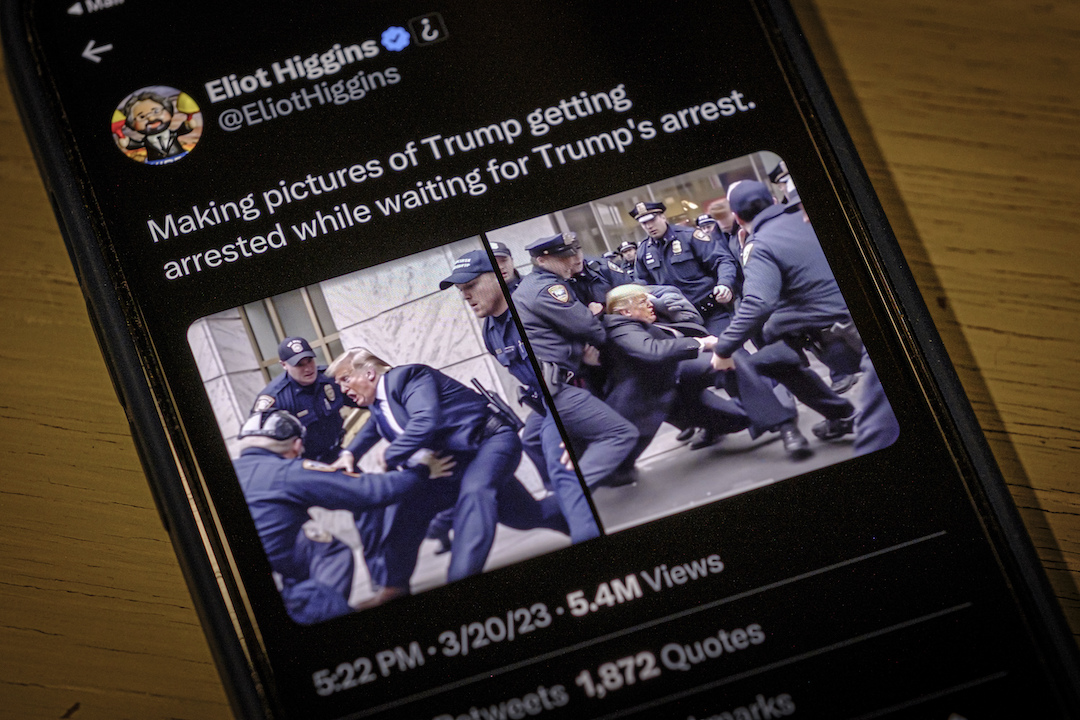— Steve Hartman, CBS News
The story starts with a dart and a map. Over a shoulder, the dart is thrown, and where it stops no one knows.
Once the dart lands on a town, Steve Hartman goes there and calls someone up on the phone and interviews them. Admittedly, it’s a unique way of getting a story, but his “Everybody Has a Story” segments on CBS’s The Early Show are being emulated on local newscasts and in newspapers across the country. Actually, Hartman got the idea for the segment from newspaper reporter David Johnson of Idaho’s Lewiston Morning Tribune.
Hartman recently was on The Poynter Institute’s guest faculty for “TV & Power Reporting for Reporters and Photojournalists.” During a break, he sat down with Jill Geisler, the Leadership & Management Group Leader, to talk about how he does what he does best: intimate and insightful portraits on everyday people.
Jill: As you travel the country at the whim of a dart, what are you learning?
Steve: I’m learning that people are a lot more interesting than I thought they were before I started this. I sort of went into this only half believing in the concept. I was sort of looking for something new and interesting to do that might catch people’s eye, but I’m not sure I really, truly believed that everybody had a story. And I felt like I did it a few times and got lucky. Now that I’ve done it about fourty times, I guess the one thing I’ve learned is that people are just a heck a lot more interesting and a heck of a lot more newsworthy than I ever really thought they were.
But they don’t think so.
They don’t think so. People often ask me, “What would your story be?” And I think about it and I’ve no idea what my story would be, and I’m guilty of the same thing that everybody else is guilty of, and that’s either not knowing what your story is or not recognizing that you’re important. People just don’t think — and it’s our fault as reporters that we’ve said to be newsworthy you have to have done something violent, or something crazy, or something unusual or have Siamese twins. We’ve conditioned people to think that they’re not important, and I guess that’s one of the things I like about the segment. I think it does make people realize they are important.
As I look at your stories, so many of them are about family. So many of them are about people meeting personal challenges, and those aren’t things we see often on television.
Yeah. And part of that is because when we choose our news stories, we run them through the same filter. We’re looking for good characters. We’re looking for things that we think are dramatic, and when you run these stories through a filter, you end up with the same “stuff.” I don’t. I’m not allowed a filter. Wherever that dart hits and whatever name I pick, I’m stuck with that person. Therefore, I think I’m forced to tell the stories that are really out there. And sometimes they’re not the stories I would choose, but I have no choice.
But people have told you personal things in some cases that they’ve rarely told other people.
Yeah. And that still mystifies me a little bit. I wonder why people do tell me the things they tell me. I think that, in some ways, people are looking for validation and they’re looking for recognition and maybe they’re hungry for that feeling that their lives are important.
Do you ever think twice about putting an intensely personal story on the air when someone has told it to you?
Yes, I do. There have been several things that have been told to me, and even though the person tells me they know the camera’s running, I still question whether it deserves to be on the news because it’s a really hard call. These are people that are just sitting at home eating a TV dinner, minding their own business and the next minute CBS News wants to put them on national television. So I’m very sensitive to those things.
There are local television stations now that are trying to emulate what you’re doing?
Yeah. There are lots of newspapers now that you’ll see they have their little dart segment and there are lots of TV stations where they’ll take a map of their state, or their region and they’ll throw the dart and they’ll try to pick somebody at random. And I think that’s great. I just think that it’s a brand of story. I was so excited about this thing when I started because I felt it is a whole new genre of news. And just the fact that people start thinking that way and thinking that other folks that aren’t normally news makers might be news “worthy” excites me.
Put on your teacher’s hat now. What advice would you give to reporters who are going to “try” to do “Everybody Has a Story?”
It takes a little more time than you might think. These aren’t necessarily easy stories in the way the car crash is an easy story. It takes a little while to think about what the story is and getting to know your subjects. A lot of times that’s a part of the process that we just ignore — getting to know the person. You can’t ignore that part of the process if you do something like this. So you need to get to know the people and talk to them and learn about them in detail before you start. You don’t just walk in the door and start rolling.
How do you choose from among the many little nuggets? They have a bunch of kids, and they have a hobby, and they have a story out of their past. How do you select?
I like to say that every time I meet somebody the story is about what I’ve learned from them. It’s a very personal thing in that way. Maybe something about them that made me see life a little bit differently. And I think that’s the kernel of the story.
If it’s the kernel of the story, how do you write it? What writing tips would you have?
Well, I make sure there is a kernel to the story and if there’s not, I think about it long enough until I boil it down to a kernel, because you can really get overwhelmed with these stories. Trying to introduce all the family members and the pet dog, and you’ve got the church scene. And you really need to whittle away all the elements that really don’t relate to that little kernel in the story and make sure everything builds around it.
What about the bosses of the people who are going out and doing those stories? What advice do you have for them?
Make sure that you give your reporters and photojournalists time to do these stories. I mean, if you consider them important, it’s not the kind of thing they’re going to be able to turn in a day. And if you do, it’s not going to work. You’re not going to have the kind of “feel” of a story that you really want, because it’s not an easy story. And I think a lot of times people are just looking for “easy” stories because they don’t want to spend the money on overtime. So don’t expect it to be easy.
You’ve talked about the importance of moments. The other night you were at the front desk atPoynter and the security guard here, who has a beautiful singing voice, was going to sing for you. This is an 80-year-old man who said, “Just a minute. I’m going to take out my gum.” And he took the gum out and you said, “Now, I would have left that part in the story.”
Mm-hmmm.
Is that what sets you apart? Leaving the taking the gum out of the mouth in the story?
Well, I think other people would have recognized that, too. But I think that’s what makes a story rich. Not just that the security guard can sing like a million dollars, but that the security guard is so anxious to show off his talent that it’s not a matter of getting worked up, it’s just a matter of taking the Trident out of his mouth and putting it in the trash and he’s ready.
Some of the stories that you have heard from people are very touching and some of them even very sad. You have a theory about tears in television news.
Yeah. I like to say that tears make for good television, but only if they’re yours. And what I mean by that is that too often we think that crying just for the sake of crying is good TV. Throw somebody emotional up on the screen and it’s going to make the viewer feel emotional. And that’s not at all what makes a viewer feel a story — seeing somebody crying on TV. What makes a viewer feel emotion is that the storyteller has such a grasp of the story and feels the story so deeply that the storyteller almost instinctively tells the story in such a way that the viewer feels it.
You’ve done 40 stories. How many more are left in you?
Well, two a week. Retire when I’m 98. I don’t know. You do the math.
There are a lot of other people who have stories?
Yeah. Well, I like to say I’ve got 40 down, 270 million to go.






